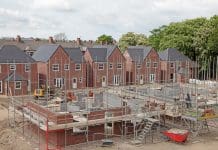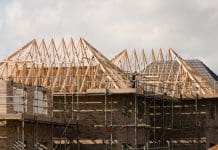Joanne Farrar, Technical Director of Planning, Atkins discusses whether challenges in the planning system are really to blame for the housing crisis…
Planning has had some bad press recently. A recent article in The Times titled “Planning chaos leaves pledge to build more homes in tatters” is an example of just how bad a reputation planning is getting these days.
So are things really that bad? And is planning really to blame for the housing crisis?
In 2015 planning permission was granted for 255,032 new homes in England, according to the Home Builders Federation (HBF). That’s 57 per cent more than a low point of 162,204 in 2009. This is supported by figures published by the Government in March which show that the number of major applications being processed swiftly by local authorities is also at an all-time high, with a record 81% decided within the required time. So, as far as planning permission goes, we’re actually on an upwards trend.
For me, the more worrying gap is actually between the number of planning permissions granted and the number of homes actually built. In February 2015, the Local Government Association published figures that indicated there were 475,000 homes in England that had been given planning permission but had yet to be built. This is supported by Isobel Stephen, Director for Housing at DCLG, who confirmed in evidence provided to House of Lords’ recent ‘Building More Homes’ report, that the “drop-out rate” between planning permissions granted and homes actually built was “around a third”.
So why do we have this gap? We’ve become increasingly reliant on private developers to deliver our houses. This poses a real challenge in attracting investment in areas where the market fails to provide adequate incentives to supply, and exposes the sector to land banking and release of sites and homes by housebuilders according to private, rather than national, interest.
The biggest challenge I see in delivering the scale of housing required isn’t planning. The real challenges are:
- Local authority planning departments are chronically under-resourced which has an impact on determining the myriad of pre-commencement conditions, including planning permission, that need to be discharged prior to building works starting.
- The capacity of the housebuilding sector is constrained – the downturn in 2008 prompted about 250,000 people to leave the construction industry. Now that demand has returned, there is a skills shortage, with bricklayers, carpenters and joiners in short supply.
- Small and medium-sized developers experience difficulty in accessing finance – not least because of the complexity of seeking funding – and have declined in number.
- The sector is now faced with new pressures from political uncertainty caused by the Brexit vote which will result in a further slowdown.
So, what can we actually do about these challenges?
In July the House of Lords report recognised the inability of the private sector to build the number of homes needed and recommended that local authorities and housing associations be incentivised to make a much greater contribution to the overall supply of new housing, for example, by being able to borrow to build social housing.
The report also identifies that the release of public land provides a good opportunity to support the building of low cost homes and help smaller builders return to the market and recommends a senior cabinet minister is given responsibility for overseeing this. At least 900,000 hectares (6%) of all freehold land in England and Wales is owned by public sector organisations, according to a new report commissioned by Telereal Trillium. This is significantly more land than previously estimated and if used, and planned, properly could go a long way towards solving our housing crisis.
To incentivise local authorities and provide more resources for stretched planning departments, the report recommends that the Government should allow local authorities to set and vary planning fees in accordance with the needs of their local area.
The only thing that worried me about the report is that it also looks to simplify planning. We need to proceed with caution here – there has already been significant planning reform over the past few years to try and expedite the planning process. While the planning process can delay development, this isn’t always a negative thing. If we’re building houses and communities for the long-term, we need to plan carefully.
Taking our time to plan will ensure the effective and sustainable delivery of the right type of housing, and the creation of high-quality places that are well integrated with other economic, social and physical infrastructure. In our rush to build new homes, we can’t just plonk houses down without the other infrastructure – schools, transport, hospitals, parks, businesses – that people need to live.
At our Future Proofing London debate last year, we talked about evolving and adapting to what people need today, but always with a long term plan for the future. This is what we need to solve the housing crisis – planning that is measured and considered, and a culture that supports development, instead of placing blame.
Joanne Farrar
Technical Director of Planning
Atkins
Joanne.farrar@atkinsglobal.com













